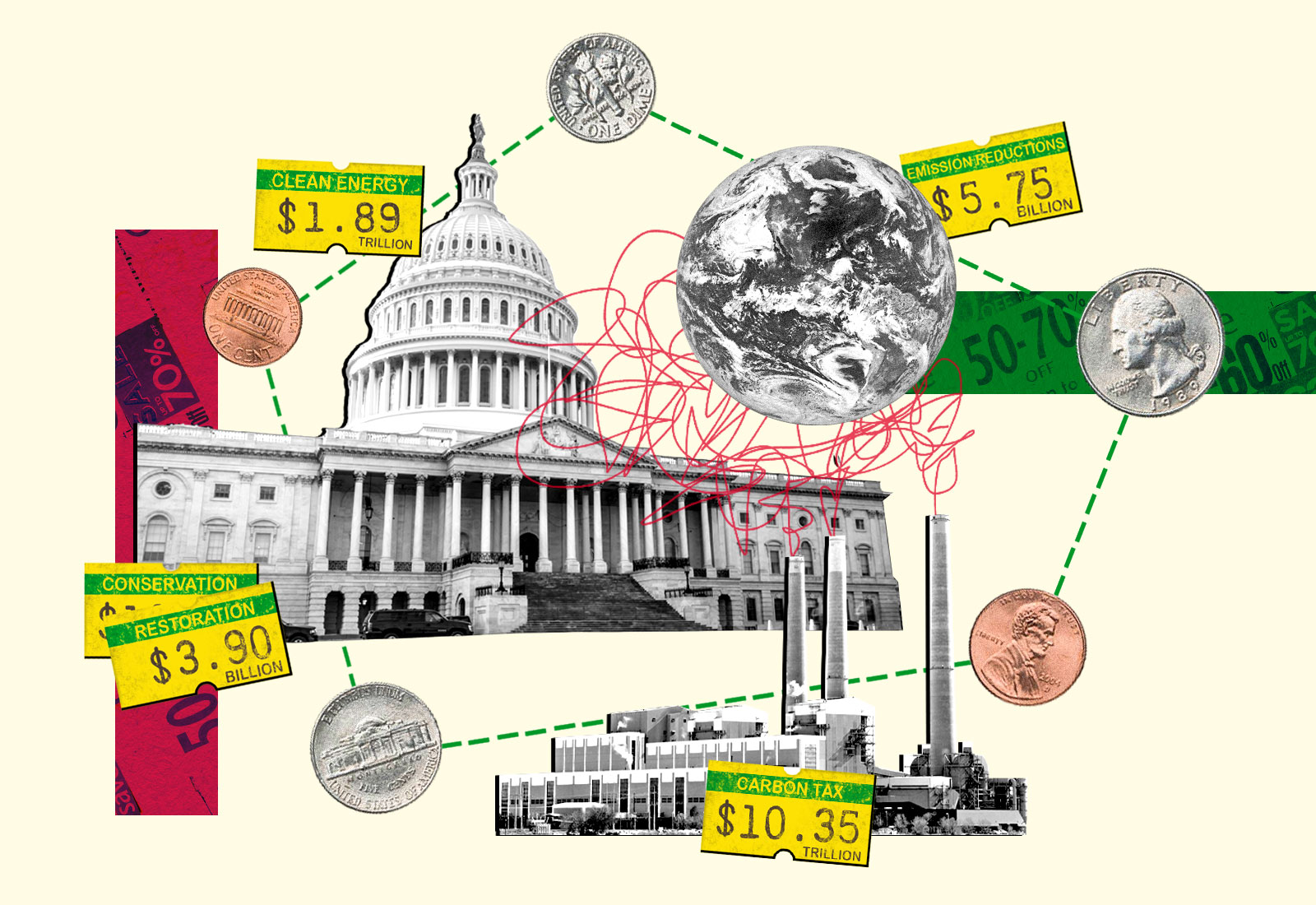On February 22, 1989, Duane LeVine, Exxon’s manager of science and strategy, gave a presentation to the company’s board of directions. Governments around the world had banded together to save the ozone layer by phasing out chemicals used in aerosol sprays and refrigerators, LeVine said. And fossil fuels could be targeted next.
It was a pivotal moment: Seven months before, during an unusually hot summer, James Hansen, then director of NASA’s Goddard Institute for Space Studies, had warned Congress that the signs of global warming were already upon us, making the issue front-page news across the country. By the end of the year, politicians had introduced 32 climate bills in Congress, and the United Nations had established the Intergovernmental Panel on Climate Change, a group of scientists and policymakers intended to put global climate policy in motion.
In light of these developments, LeVine advised Exxon to temper the public’s growing concern for the planet with “rational responses” — not only arguing that the science wasn’t settled, but also emphasizing the “costs and political realities” of addressing rising emissions. In other words, the main problem wasn’t fossil fuel emissions, but that doing anything about them would cost too much.
This sentiment was echoed by John Sununu, then-President George H. W. Bush’s chief of staff, who worked to stop the creation of a global treaty to reduce carbon emissions soon after Hansen’s testimony. Sununu started a feud with the EPA administrator at the time, William K. Reilly, because he thought legislation to take on global warming would hinder economic growth. When Hansen was preparing to give Congress an update on the “greenhouse effect” in 1989, he was surprised by some strange edits on his draft testimony from the White House’s Office of Management and Budget, run by an ally of Sununu. They wanted Hansen to say his own science was unreliable and to encourage Congress to pass legislation only if it would immediately help the economy, “independent of concerns about an increasing greenhouse effect.”
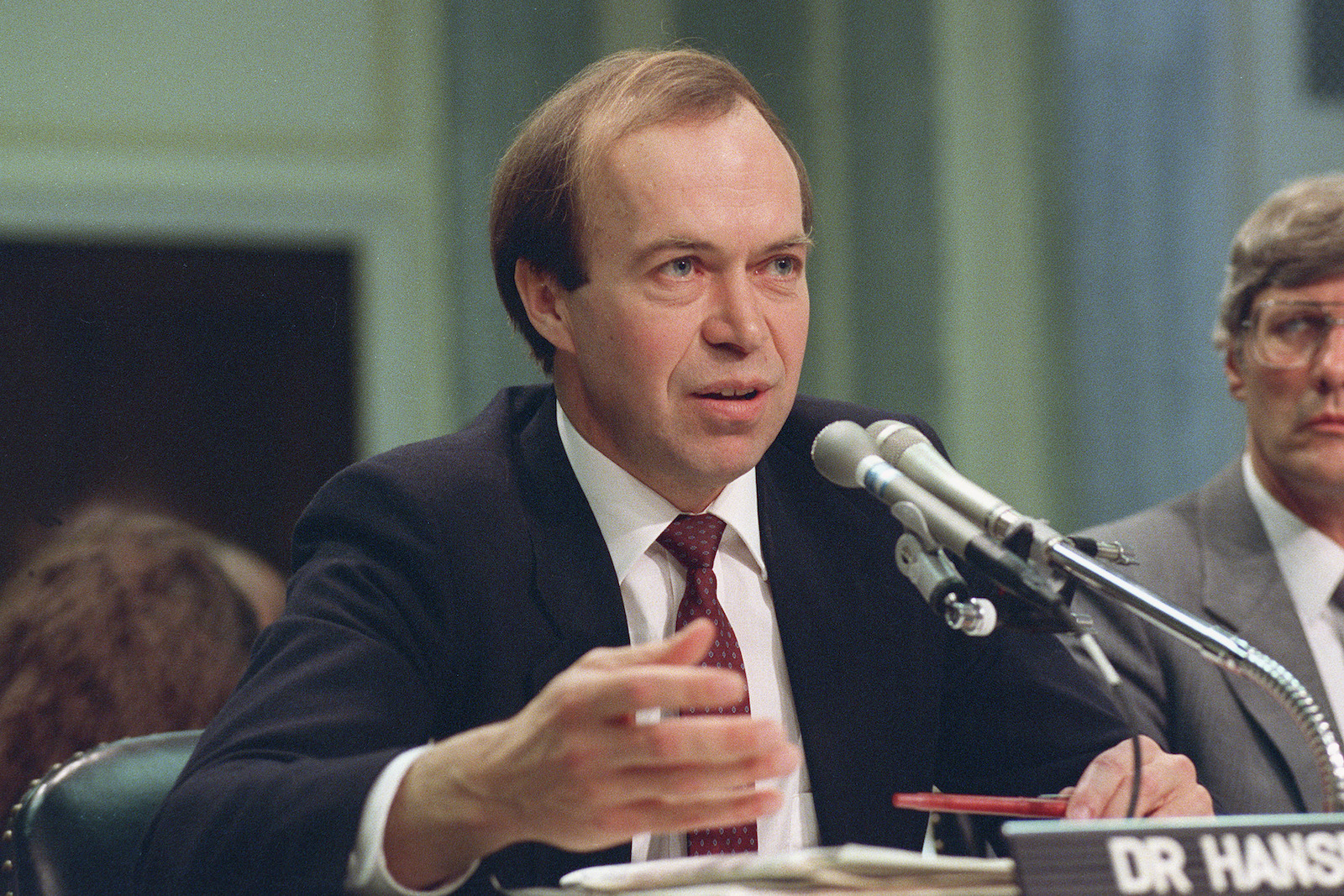
Today, the country faces a similarly pivotal moment. When President Joe Biden took office a year ago, promising to “listen to the science” and “tackle the climate crisis,” the stars seemed aligned, with a political party in favor of climate action newly in charge of both houses of Congress. But Democrats’ narrow majority has made intra-party negotiations delicate, with Senator Joe Manchin of West Virginia the fickle, final, coal-friendly vote. Once again, a focus on upfront costs is stymying a once-in-a-decade chance to pass comprehensive climate legislation.
Manchin’s complaints have centered on the sticker price. In September 2021, when Congress began considering Build Back Better, Biden’s package of social and climate policy programs, Manchin wrote an op-ed in the Wall Street Journal titled “Why I Won’t Support Spending Another $3.5 Trillion.” He asked his fellow Democrats to pick and choose which policies were really needed and to stop and consider how a big spending bill would exacerbate the problems of inflation and growing government debt. Another reason for a “strategic pause,” he went on, was to “allow for a complete reporting and analysis” of what the bill would mean “for this generation and the next.” The op-ed made no mention of climate change nor any consideration of how these future generations might fare on an unstable hothouse Earth.
Manchin is hardly alone in framing things this way. Economics has become the de facto language politicians use to debate public policy and how they evaluate solutions to alleviate planetary problems. Its persuasive power and rhetoric have been harnessed by the fossil fuel industry and its allies, who have argued for decades that climate action is a killer of economic growth, even as it has become increasingly evident that inaction is a wicked killer itself. A narrow focus on short-term costs and benefits has led to a failure of imagination, experts say: Amid an abstract debate of how to make any action on climate change economically efficient, the bigger picture of what really matters — who suffers, who benefits, whether the planet burns to a crisp — often gets lost.
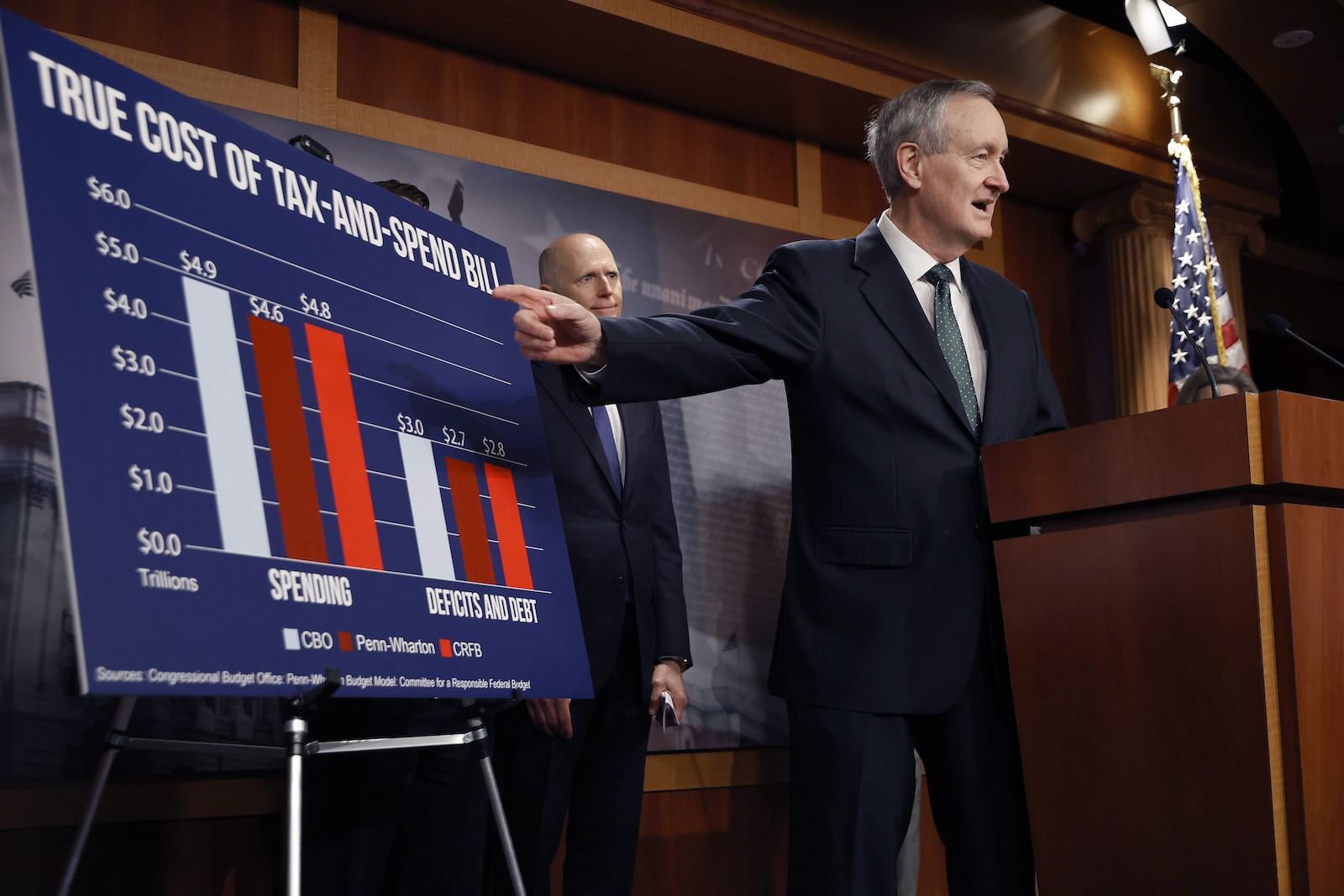
“Sometimes there are other things that we might want to value besides efficiency,” said Elizabeth Popp Berman, a sociologist who wrote the new book Thinking like an Economist: How Efficiency Replaced Equality in U.S. Public Policy.
For months, headlines about Build Back Better highlighted the price tag, which was eventually trimmed from $3.5 trillion to $1.7 trillion. The coverage often missed the necessary context: Those trillions were budgeted over 10 years, or $170 billion a year. And yet Congress passed a $768 billion defense budget in December with little criticism from the mainstream media. Even Manchin voted for it. “Why Doesn’t the Pentagon Ever Get Asked, But How Will You Pay for It?” read one headline from the left-leaning The New Republic.
The general public has a “highly skewed” economic understanding of climate change, said Benjamin Franta, a historian who studies climate disinformation at Stanford. He said there’s “a tendency to focus on the cost of action and not the cost of inaction.” He blamed this, in part, on a coordinated industry effort to emphasize the price tag of climate policies, with no mention of who they help (thousands of lives saved) or even how they could save the government money in the long run.
Not long after LeVine advised Exxon to highlight the economic costs of climate policies, the fossil fuel industry began paying economists to produce research that made legislation look prohibitively expensive. When people talk today about climate change costing too much, “the industry’s fingerprints are on that message,” Franta said.

The field of economics started dominating discussions around government spending decades before that infamous Exxon meeting in 1989, and it’s often taken for granted that money is a light to guide legislation. For many politicians, the first step is recognizing that there’s a problem; and the second step, unless it’s seen as an existential threat like a world war, is figuring out if it’s cost-effective to fix it. This way of thinking even shapes the words they use to talk about nature: Forests are “natural resources,” fish are “stocks.”
“Economics is the mother tongue of public policy, the language of public life, and the mindset that shapes society,” wrote Kate Raworth, a self-described “renegade” economist at Oxford, in Doughnut Economics: Seven Ways to Think Like a 21st-Century Economist.
Economists themselves, however, haven’t always been comfortable with the authority granted to them. “The ideas of economists and political philosophers, both when they are right and when they are wrong, are more powerful than is commonly understood. Indeed, the world is ruled by little else,” wrote John Maynard Keynes, the English economist whose ideas overhauled how governments spent money, in the 1930s. “Practical men, who believe themselves to be quite exempt from any intellectual influences, are usually the slaves of some defunct economist.”

Thanks largely to the success of Keynes’ ideas, the field’s privileged role in government only expanded from there. During World War II, economists helped the U.S. government find ways to finance the war and use military resources more efficiently; in the aftermath, they helped with rebuilding Europe and became embedded in the U.S. government more officially.
The Truman administration formed the Council of Economic Advisers in 1946, making economists the first social scientists with a presence in the president’s inner circle. Economic theory became more of a mathematical “science” as it incorporated computational modeling — giving it the appearance of being more scientific, and thus more authoritative than ever.
In 1965, inspired by how economists were managing the Pentagon’s budget with cost-focused analysis, President Lyndon B. Johnson decided to expand the approach to other agencies. By the late 1970s, economic thinking had pervaded government policy, guiding legislation around poverty, health care, and the environment. In 1975, the Congressional Budget Office was formed to provide nonpartisan budget analysis for lawmakers, “formalizing that this is the way we should think about legislation,” Berman said.
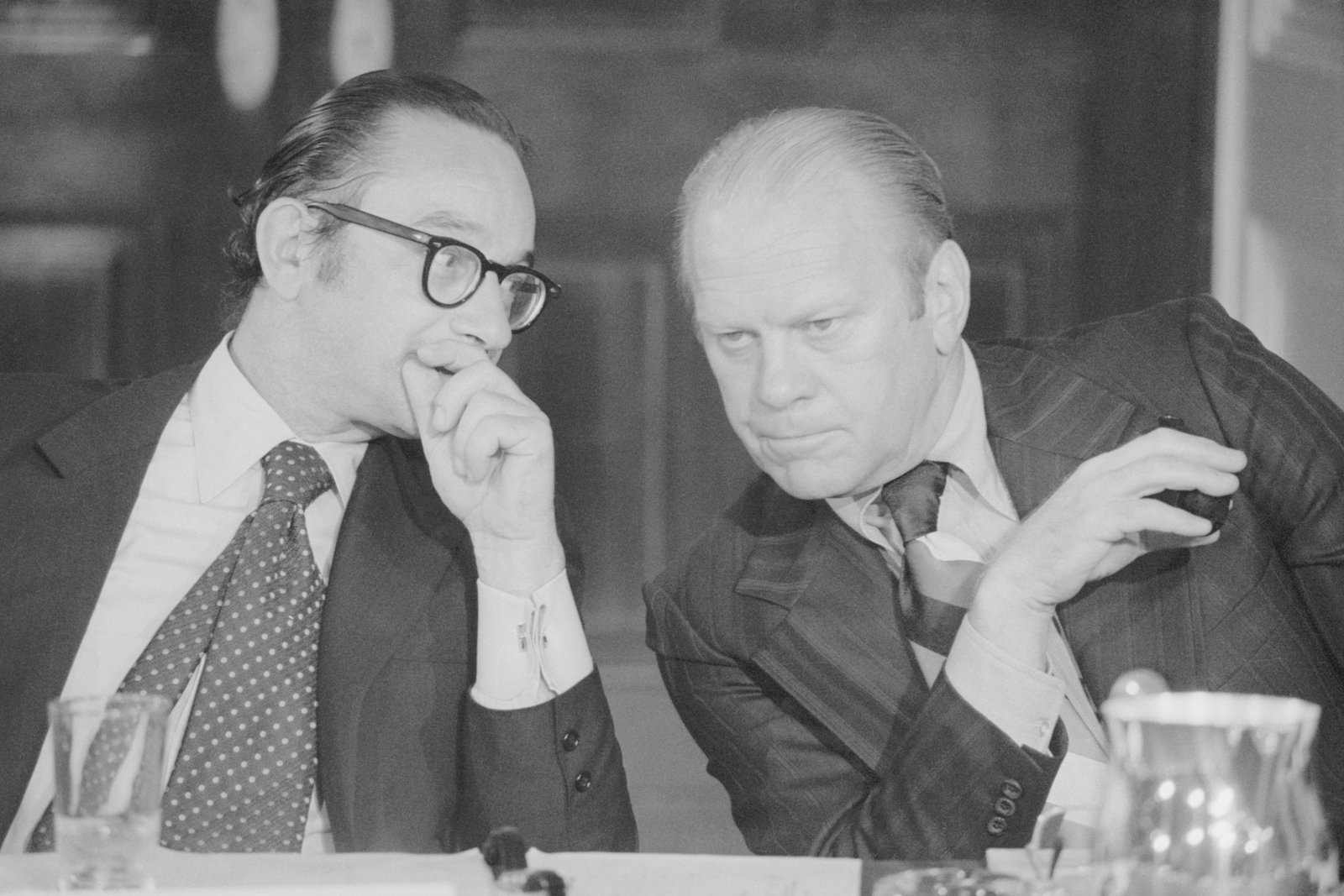
The rising influence of money-driven decision-making had the effect of narrowing debates over public policies, dialing down ambitions to address environmental crises, compounded by a shift in focus among many mainstream economists to the risks of rising government debt and inflation. Consider the foundational pieces of environmental legislation in the United States, the Clean Water Act and Clean Air Act of the early 1970s. They put in place strict standards for controlling pollution, regardless of economic consequences. But by 1990, environmental policy had moved away from this moral framework that stigmatized polluters, according to Berman.
“There was a big push to try to reframe environmental policy around thinking about really considering cost explicitly,” she said. Pollution was simply seen as an “externality” to put a price on, rather than something to try and stop altogether. A top-down regulatory approach had been replaced by a cost-sensitive strategy, which is inherently at odds with ambitious government action. “I think many of the landmark pieces of social policy legislation wouldn’t have existed if we had thought like that about them at the time,” Berman said.
By the time that Hansen testified before Congress in 1988, some people already viewed legislation to address the problem of the “greenhouse effect” as a threat to economic growth. Bush’s chief of staff, Sununu, worked to block climate initiatives at every turn. He saw efforts to restrict emissions as part of a larger, conspiratorial plot by environmentalists — some of whom worried that the combination of economic and population growth would lead to societal collapse. “Some people are less concerned about climate change and more concerned about establishing an anti-growth policy,” Sununu told the New York Times in 1991. The following year, he convened a “Workshop on Global Climate Change” for economists to discuss how reducing emissions would harm growth.
The American Petroleum Institute, the oil industry’s largest lobbying group, took a similar tack and began commissioning studies to put numbers behind the idea that climate policies would hurt the economy. In 1991, David Montgomery, an economist at the consulting firm Charles River Associates, calculated that a carbon tax — a fee imposed on fossil fuels — of $200 a ton would shrink the country’s economy by 1.7 percent by 2020, a finding that appeared in the Associated Press, CNN’s Moneyline, and the New York Times.

“The costs [of climate policy] would be high,” Montgomery told USA Today in 1992. “Economic benefits are uncertain, distant, and potentially small.”
The 30-year-old strategy is still going strong. When former President Donald Trump announced that he would pull the U.S. out of the Paris climate agreement in 2017, he repeatedly cited industry-funded estimates of its cost, dropping peculiarly specific numbers: “2.7 million lost jobs by 2025,” “$3 trillion in lost GDP,” “households would have $7,000 less income.” These statistics, Stanford’s Franta said, were from some of the same industry-funded economists that had been quoted in newspapers in the 1990s.
In February, the leaders of several organizations working to undermine climate action — the Heartland Institute, Competitive Enterprise Institute, and JunkScience.com — held a press conference to discuss Biden’s “harmful climate agenda” ahead of his State of the Union address. “Overwhelmingly, Americans do not want to pay for the cost of climate action, especially when such actions will hold negative consequences for the economy and America as a whole,” a media advisory describing the event said. (Grist’s requests to attend the event never received a response.)
“We see a rinse-and-repeat pattern with climate legislation,” Franta said. “It’s often the same players, it’s often the same talking points. You know, ‘This is too expensive. It’s not going to work.’” Whenever the federal government was considering taking action — from when the Clinton administration proposed a carbon price in 1993 to when Senators John McCain and Joseph Lieberman introduced a bipartisan national cap-and-trade program in Congress in 2003 — the industry trotted out economists’ models that conveniently ignored the economic upsides of the policy.
One of the economists who used to analyze climate policies at Charles River Associates, Paul Bernstein, now advocates for passing a price on carbon emissions and volunteers with the Hawaii Chapter of the Citizens’ Climate Lobby. He regrets that his models only looked at the costs, not the benefits.
“I think the models are good, I think the economics is good,” Bernstein told Grist. “But one problem with it is the messaging around not telling the whole story. That’s, I guess I would say, my biggest regret … Almost always, all we were asked to do is report on the costs. And in terms of benefits, the benefits we reported were the amount of emissions that were reduced, but there were no dollar figures attached to that.”

For a long time, Berman said, economists didn’t have the tools they needed to calculate the benefits of regulatory policy; it was more straightforward to calculate the costs. As corporations that wanted to avoid regulation started pushing for more attention to costs, they formed alliances with economists, who weren’t necessarily hostile to environmental policy, but simply wanted to make it more cost-effective. “That just lined up really well with also what industry was trying to achieve in weakening environmental protections,” Berman said. They became “unintentional allies” in making cost and cost-effectiveness “the central way of thinking about environmental outcomes.”
This kind of thinking lingers, even in international reports that warn about the dangers of inaction. A report out this week from the Intergovernmental Panel on Climate Change, for example, calculated the costs of addressing rising temperatures separately from its benefits. In the report’s summary for policymakers, the panel noted that policies to cut global emissions in half by 2030 could hinder global economic growth “a few percent” by 2050 — if you ignore all the real-world costs that come with a hotter planet as well as the benefits of cutting emissions (less air pollution, healthier and more productive people). Why consider this hypothetical, unrealistic scenario at all? In a study from the journal Nature in November, researchers from Europe and Canada argued that these “overly pessimistic” calculations provide “a skewed image to policy-makers,” drawing their attention to the cost of taking action.
Such economic models render key aspects of this planetary problem invisible, from soaring temperatures and oppressive heat waves to the slow unraveling of Earth’s life-supporting ice, ocean, and land systems. As John Sterman, an expert on complex systems at MIT, once observed, “The most important assumptions of a model are not in the equations, but what’s not in them; not in the documentation, but unstated; not in the variables on the computer screen, but in the blank spaces around them.”

Of course, opponents of a particular policy, whether it’s health care reform, public transit projects, funding education, or providing emergency relief, frequently point to its upfront cost. “GOP senators balk at $1.9 trillion price tag for Biden’s COVID-19 bill,” read a headline from CBS News last year.
Climate change is simply an egregious example because the cost of doing nothing is astronomical. Economists estimate that by around 2030, the consequences of heating up the planet could include a $240 billion COVID-like economic shock every five years. Democrats have leaned into this message — in November, Biden tweeted that “every day we delay, the cost of inaction increases.” The upper-end estimate for the price tag of unchecked global warming? $551 trillion, more money than currently exists on Earth.
Many politicians still haven’t come to terms with those estimates. Last month, Sarah Bloom Raskin, Biden’s nominee for a top post at the Federal Reserve Board, was forced to withdraw after facing opposition from Republicans and Manchin for making the case that the central bank has a role to play in shifting away from carbon-heavy assets and helping to prevent a climate change-fueled financial crisis. In her withdrawal letter, Raskin wrote that she feared that “many in and outside the Senate are unwilling to acknowledge the economic complications of climate change and the toll it has placed and will continue to place on Americans.”
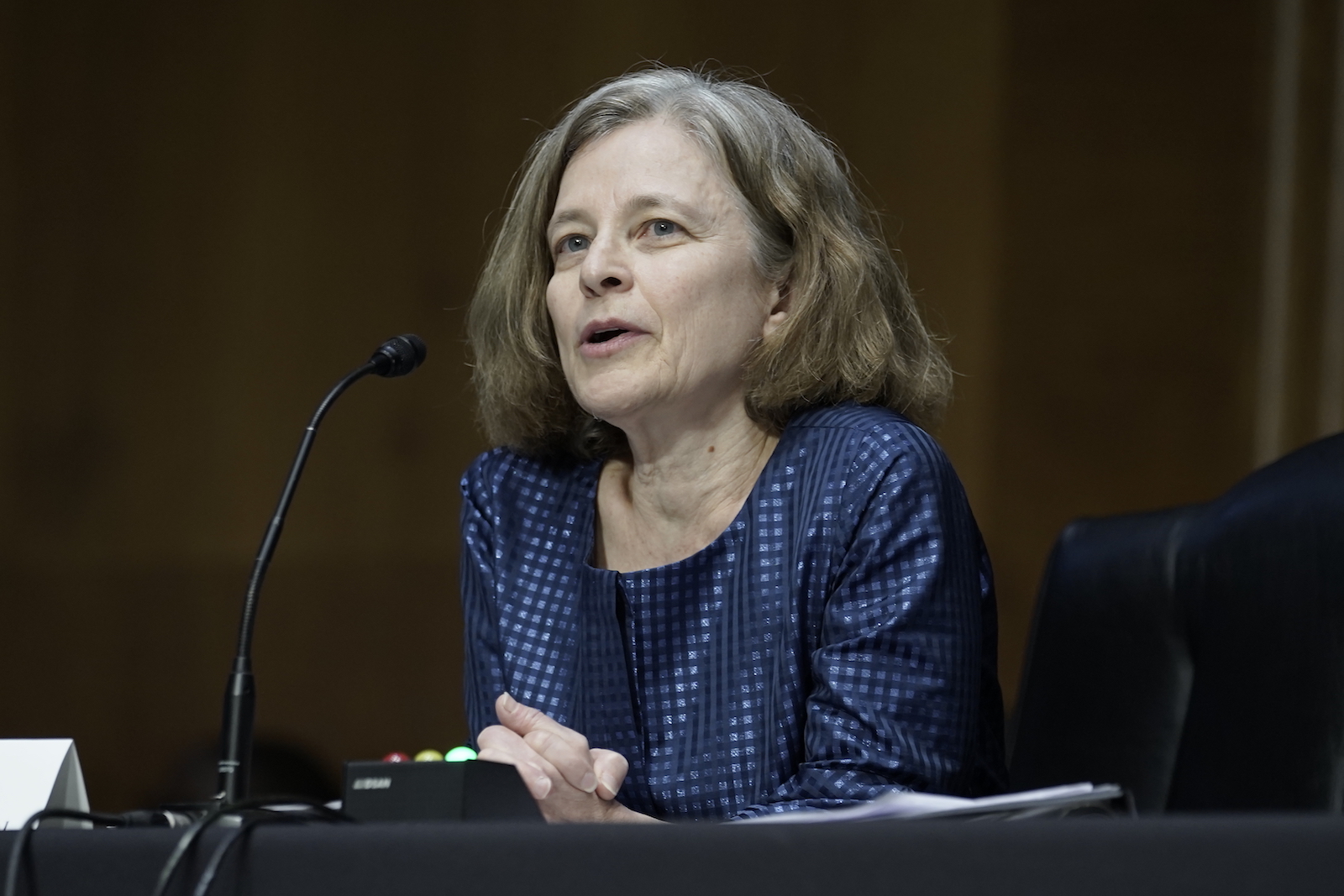
In the past, the price of failing to address climate change seemed theoretical, decades down the line. Today, we’ve already begun paying for it. Last year alone, the United States spent $145 billion on the 20 worst climate and weather disasters, from the wildfires in the West to Hurricane Ida in the Gulf of Mexico. In fact, 2021 was the third costliest year for disasters in U.S. history, according to a recent report from the National Oceanic and Atmospheric Administration.
More severe weather patterns are already impeding economic growth. Climate change has slashed agricultural productivity in North America by roughly 13 percent over the last 60 years (though other factors have increased overall productivity), according to a report from the Intergovernmental Panel on Climate Change in February. Americans are beginning to grasp the situation. In a recent survey by the Yale Program on Climate Change Communication, a third of respondents said they were not just concerned, but alarmed about global warming. Political action in the U.S., however, has been slow to catch up.
After the House of Representatives passed Build Back Better last November, the bill stalled in the Senate. It all fell apart in December, when Democrats failed to meet Manchin’s demands to trim the bill by cutting other policy items, such as expanding child tax credits. Now, seven months before the midterm elections, when Democrats risk losing their narrow majorities in the House and Senate, discussions around Build Back Better are restarting — amid political turmoil caused by Russia’s invasion of Ukraine and surging gasoline prices.

Democrats, including Manchin, have agreed on many of the climate aspects of the bill, which would put $555 billion toward incentives for renewable energy and green transportation. But the funding is tied up with all the other elements of the package — like prescription drug reform and more affordable health insurance.
And all of them come with a price tag.

Economics provides a useful way of looking at the world, but it isn’t the only way. So how do we fill in what economic models have so often left out, all those blank spaces, and make what’s been hidden visible? There are a lot of different ideas, from highlighting the benefits of climate action when it comes to drawing up legislation to focusing on more concrete, local needs that get lost in big-picture debates.
Adie Tomer, an infrastructure policy and urban economics expert at the Brookings Institution, has proposed scoring legislation for “climate impacts, not just budgetary impacts.” That could mean that every bill would get a standardized metric (like “greenhouse gas emissions per dollar”) that would help track progress toward emissions-cutting goals, as well as help politicians and voters understand “the sometimes-invisible climate impacts of legislation,” Tomer wrote in a blog post with Caroline George, a research assistant at Brookings Metro.
“We do not yet have a standard form of legislative environmental scoring in the United States,” Tomer told Grist. That makes it hard for people to compare the outcomes of, say, the Clean Electricity Performance Program introduced in the House of Representatives last year — which would have rewarded utilities for producing clean power — to the clean energy tax credits currently being considered as part of Build Back Better.
Several countries already use a form of green budgeting. France, for instance, does an environmental analysis of its budget before it even goes up for discussion, providing information to the members of the National Assembly on what the bill would mean for climate change, land use, water resources, waste systems, and plant and animal species. “The long-run costs are what also needs to be communicated,” Tomer said. “It’s not just, ‘Hey, these are the budget impacts upfront,’ but in fact, ‘What could be the long-term impacts on society?’”
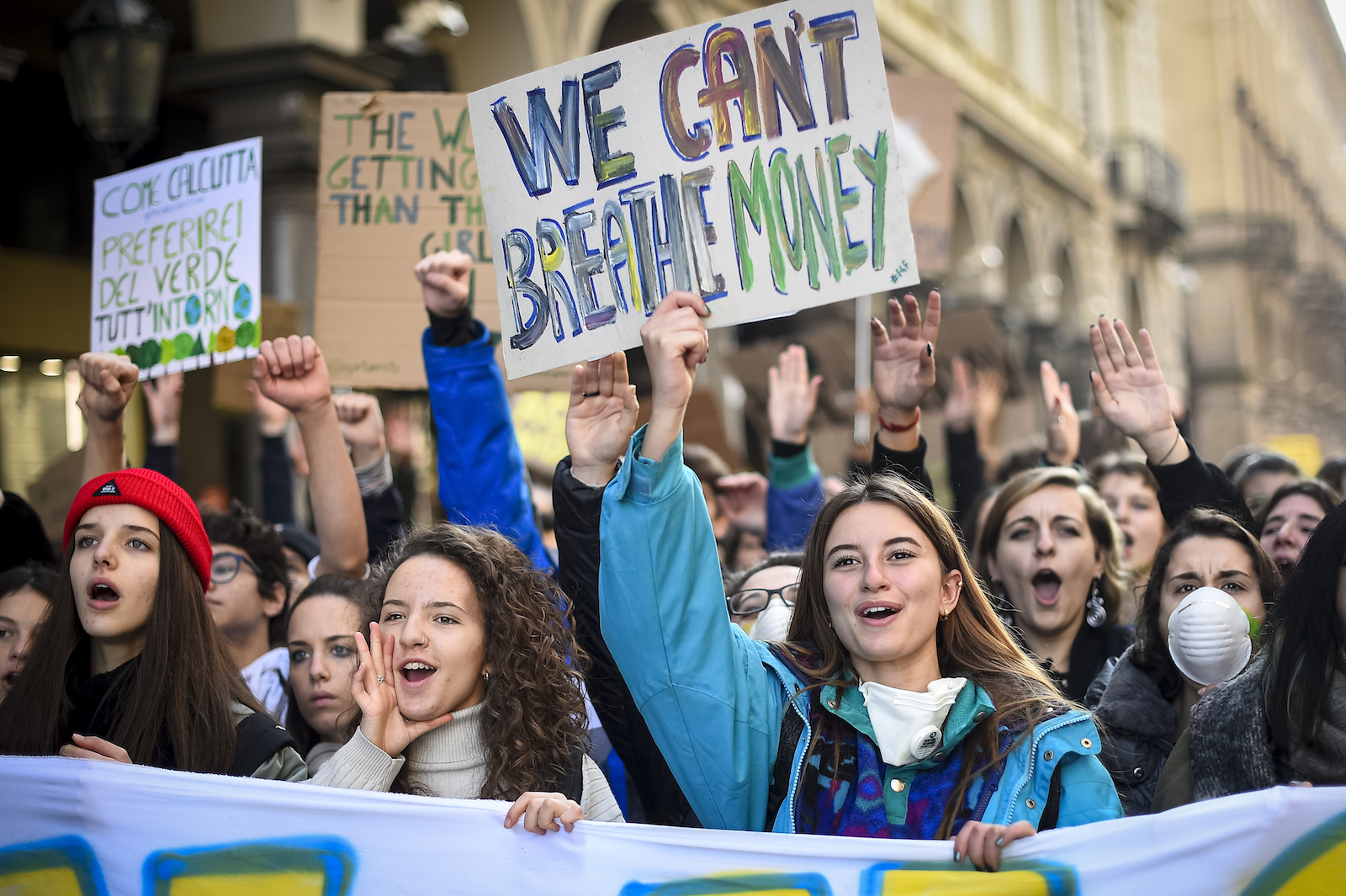
Others want to get away from the big-numbers approach altogether and focus on specific, local needs. Shalini Vajjhala, a former Obama administration official who now helps cities prepare for the threats brought on by climate change, says that generalities aren’t helping. “Nobody needs to hear that we need trillions of dollars for adaptation,” she said. To drive more money toward climate projects, people need to hear what it needs to be spent on, where it could go, and who, specifically, would benefit. What will prevent a wildfire from burning down the neighborhood? How can we stop homes from flooding in the next hurricane?
Steering conversations toward something concrete and vivid — and away from polarizing topics like climate change and far-off future scenarios — can speed up action, Vajjhala said. “When people are debating about doing something, I will ask, you know, ‘Are you aware of how much money you’re losing if you don’t do this?’”
Take transit agencies as an example. Extreme heat melted streetcar cables in Portland last summer. Hot temperatures can warp steel tracks and overheat engines and have caused long delays for trains in the Bay Area and speed restrictions on Amtrak trains on the East Coast in recent years. So during heat waves, transit agencies have been sending out fewer trains and running them more slowly, Vajjhala said. That means older adults and transit-dependent workers are stuck outside waiting for the train on the hottest days of the year, and in the meantime, transit agencies are also “hemorrhaging money,” she said. Pointing this out changes the direction of a conversation: It’s no longer about “if” or “when,” but simply “how” to fix it.
As for economists, they’re getting better at quantifying why avoiding catastrophic climate change is worth so much. Franta says there’s a new generation of economists looking at the costs of flooding, storms, droughts, heat waves, wildfires, and other disasters, quantifying the damages and how much can be attributed to climate change. “I think society needs them to step up and do that full analysis, you know?” Franta said. “Not just do part of the picture, not just look at the cost of a policy because that’s what they are hired to do, but use it to serve society and look at the entire problem with the entire picture.”
Economics is a necessary part of policy discussions, but it has come to dominate them to the point that people have started to see other perspectives as irrational and unreasonable, Berman said. The moral arguments that once brought the Clean Air Act into being have ceded ground to approaches that tinker with the market. Relying on clean energy tax credits, as Build Back Better does, is a lot less ambitious, and harder for normal people to understand, than declaring that you’re going to try to completely phase out fossil fuel production.
“Applying economics in a political context isn’t necessarily going to get us to where we want to go in political terms, right?” Berman said. “There’s a gap between abstract models of how things should work and what it actually takes to create change in the world.”

